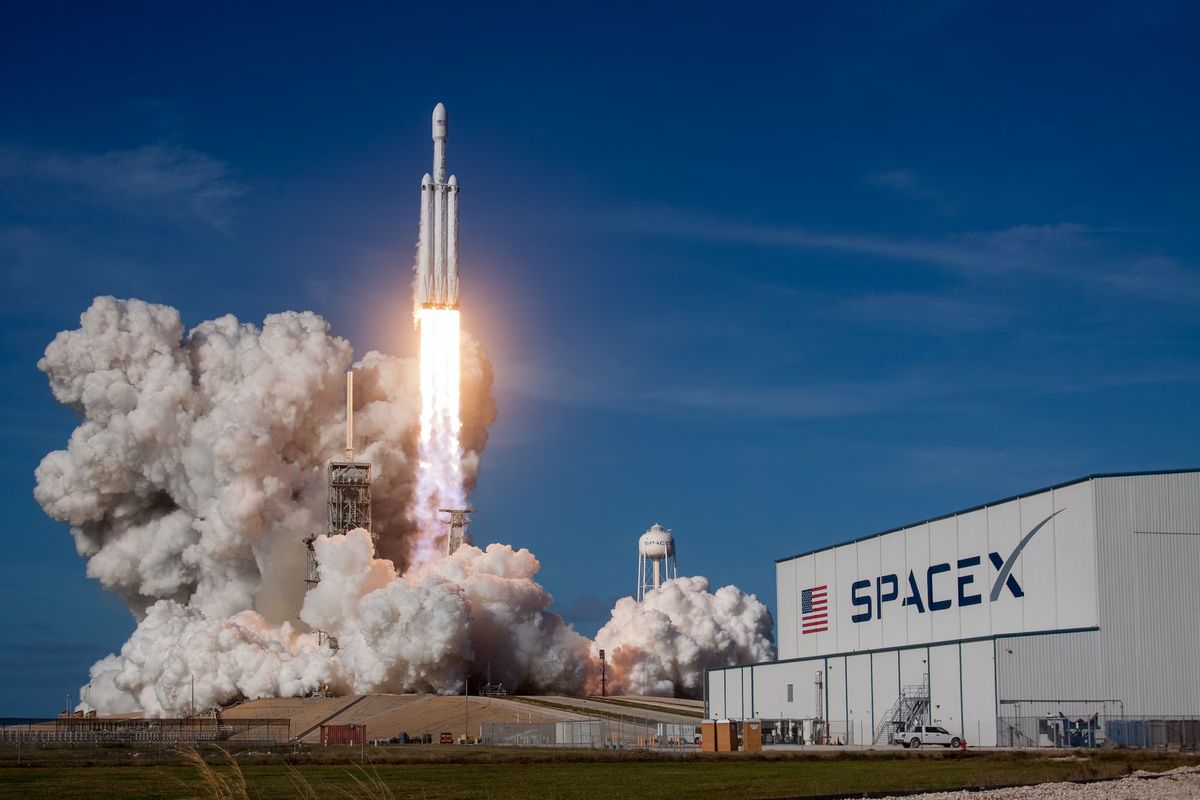Watch Falcon Heavy's fairing reentry in stunning SpaceX footage

SpaceX has been sharing additional details and visuals regarding their recent Falcon Heavy mission. The mission, which took off on Sunday from Florida's Kennedy Space Center, successfully delivered three payloads, including the ViaSat 3 Americas broadband communications satellite. This satellite is the first of a trio of next-generation geostationary satellites built by Boeing for California's ViaSat.
In a recent update, SpaceX released an impressive video showcasing the reusable rocket fairing reentering the Earth's atmosphere at a significant velocity. The footage offers a surreal and captivating view of the fairing's descent.
“Fairing reentry on the ViaSat-3 mission was the hottest and fastest we’ve ever attempted. The fairings reentered the atmosphere greater than 15x the speed of sound, creating a large trail of plasma in its wake,” SpaceX stated in a tweet.
Fairing reentry on the ViaSat-3 mission was the hottest and fastest we've ever attempted. The fairings re-entered the atmosphere greater than 15x the speed of sound, creating a large trail of plasma in its wake pic.twitter.com/VgdlH6r3yR
— SpaceX (@SpaceX) May 2, 2023
According to SpaceX, the Falcon Heavy mission accomplished the farthest recovery and landing of fairings to date, at an impressive distance of over 1,200 miles. To put it in perspective, that's roughly a third of the distance to Africa. When SpaceX decides against retrieving the two fairing halves from the ocean, it tries to catch them in massive nets aboard ships stationed in the sea. These fairings can then be renovated and employed in future rocket launches.
The Falcon Heavy is composed of three first-stage Falcon 9 boosters that can land back on Earth, allowing them to be recycled for future use. However, Sunday's mission necessitated a more remote orbit than usual, which meant that the boosters lacked sufficient fuel to return and land, resulting in a crash into the ocean.
Of the Falcon 9 boosters that made up the Falcon Heavy, two had already been deployed on numerous missions. One booster had previously supported various missions such as Arabsat-6A, STP-2, COSMO-SkyMed Second Generation FM2, KPLO, as well as three Starlink missions. The other booster had supported the Arabsat-6A and STP-2 missions.

Equipped with 27 Merlin engines, the Falcon Heavy rocket generates an impressive 5 million pounds of thrust during launch, a substantial increase compared to SpaceX's mainstay Falcon 9 rocket, which produces 1.7 million pounds of thrust. However, the recently tested Super Heavy rocket surpasses them both, with its 33 Raptor engines capable of generating around 17 million pounds of thrust during launch.
The Falcon Heavy mission that took place last Sunday marked its second flight this year and the sixth overall since its inaugural launch in 2018. As of now, SpaceX has scheduled its next Falcon Heavy mission for June 23.
Advertisement




















